#ondomo
Audio
Scene XI by Snowdrops from their Live at the Archaeological Crypt of Paris [free download on Bandcamp]
#music#french music#snowdrops#ondes martenot#christine ott#ondomo#mathieu gabry#synth#soundscape#soundscapes#sam navel#artwork#noémie c.#serpentine studio#live#live music#archaeological crypt of paris#notre dame#gizeh records#gizeh#crypte archéologique de l'île de la cité
19 notes
·
View notes
Text
Jonny Greenwood’s ondes Martenot Tone
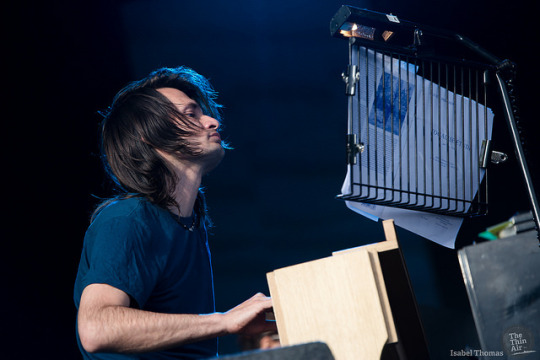
Jonny losing himself in a performance of Messiaen’s Vocalise Etude at RHK Dublin in 2015. Photo by Isabel Thomas for The Thin Air.
Written in response to the following anonymous question:
Hi TKOG! When Jonny uses his Ondes Martenot/Ondomo/French Connection etc. does he usually use the Sine Wave function or to produce a basic sine wave sound? I am trying to build my own similar instrument so was wondering what sound I should try and aim to produce. Thank you!
Despite how often the sound of the Martenot is described as a “sine tone”, you will only very rarely hear just a sine tone from the instrument. Jonny’s ondes sound on If You Say The Word for example (more on that later) is far richer than a sine wave. Most versions and offshoots of the Martenot do offer a sine wave, but players (ondists) generally combine it with other waveforms. A very common combination is the sine-wave (onde) added to a lowpass-filtered square-wave (petite gambe). This is similar to but richer than a sine wave, and often blends better with other instruments compared to the pure sine.
One reason for these combinations is that the speakers (diffuseurs) of the original Martenot added lowpass and highpass filtering. The currently-produced ondes Musicales Dierstein at one point used a guitar-oriented Celestian Vintage 30 speaker for its primary (principal) loudspeaker, which rolls off the highs at around ~5kHz and the lows at ~200Hz (full graph here). So even a rich waveform will start to sound like a sine when played at a higher pitch, because the speaker will roll off most of the harmonics of a high-pitched note. With a speaker like that, the combination of sine and filtered square will sound like a slightly richer sine wave at higher pitches. And at lower pitches where the fundamental sine sound is filtered out, the gentle square harmonics will still give definition to the note. The speaker really balances out the sound of the instrument.
Jonny’s Analog Tones

Jonny rehearsing There Will Be Blood with the Wordless Music Orchestra in 2014. His French Connection and its cabinet sit unused as he plays his original digital ondes Martenot. The amp is a rental Vox AC30CC2.
When it comes to Jonny specifically, his choice of waveform depends on both the instrument and the piece of music. For live performances of How To Disappear Completely from 2001 to 2012, Jonny used his French Connection and its Apprentice modular case (the French Connection is just a controller, and produces no sound on its own). At those shows, the instrument is connected directly to the PA, there’s no filtering from a guitar-type speaker. Perhaps that’s why he used a richer saw wave for low notes, and a purer sine-like wave for the high notes. You can hear this clearly in recordings of the band’s Saitama show. But the analog RS-95 oscillators that Jonny uses with his French Connection can’t actually produce a pure sine wave, no-matter the setting of its “shape” knob. So the RS-95′s sine wave sounds more like a triangle wave with some added even-order harmonics (the result of creating the sine wave from the saw/triangle wave). In addition, some other Analogue Systems modules like the RS-100 filter will gently overdrive when connected to a full-volume oscillator, which can add extra harmonics too. When Jonny performed There Will Be Blood with the Wordless Music Orchestra in 2014, he set the volume knob on his RS-110 filter to max, adding some overdrive to fatten sound of the RS-95′s sine output. And Jonny isn’t afraid to use the RS-95′s harmonically rich sounds too: the synthy sliding notes during the last section of the 2+2=5 recording are a great examples.
Unlike the original digital ondes Martenot he obtained in 1999, Jonny’s ondes Musicales Dierstein from 2011 uses analog transistors to generate its sounds (for more info on Jonny’s various Martenot offshoots, see this article). The Dierstein’s sine is also a slightly impure analog waveform, but it is much purer than the RS-95’s sine. It’s interesting to note that, for a performance of There Will Be Blood in 2014, Jonny did use the sine tone (Onde setting) when playing parts originally recorded with his original digital ondes Martenot. However, when playing new compositions with the London Contemporary Orchestra in 2015, Jonny instead used the clipped triangle wave, and even mentioned it sounded good in the concert hall (the Victoria Hall in Geneve). For that show, Jonny did use the Celestian speakers, which gave a warmer sound to the clipped triangle. It’s also interesting that Jonny seems to prefer using just one waveform at a time, rather than combining waveforms by turning on multiple switches.

A photo of the control drawer (tiroir) of Jonny’s Dierstein, posted on his twitter acount in 2015. Only C and D2 are active. C is a peak-limited triangle wave – imagine a triangle with the top chopped off to form a trapezoid. D1, D2, and D3 are switches for different speakers, and D2 is the reverberant speaker. On the Dierstein, D2 is a guitar-type speaker with a warm-soundng reverb emulation. This is pretty different from earlier versions of D2, which had a speaker connected mechanically to a set of large brass springs.
Stimulating Harmonics
So you may be thinking it’s best to start with a rich waveform and add some filtering. But some of the Martenot’s speakers can also add harmonics. The Palme and Metallique speakers both replace the cone of a normal speaker with a more resonant material. In the case of the Palme, the voice coil is coupled directly to the bridge of the custom-build string instrument. When the voice coil is sent into excitation by an input sound, it directly vibrates the strings. So the Palme does not simply add some stringy reverb. The strings of the Palme are actually “played” directly by the input sound, adding harmonics that were never present in the original sound (if you’re curious for more info on the Palme, see our article on building one).
Why should we care? Well, even when Jonny does use a pure sine setting, the final output we hear still might not be a sine wave. When a sine is used with the Palme speaker, the natural harmonics of the vibrating strings are added to the sound, and shaped by the resonance of the Palme’s body.

A photo of Jonny with his digital ondes Martenot and Palme speaker at the Koko in London for the Big Ask in 2006.
The studio recording of The National Anthem is a good example of a pure waveform used with the Palme. For that recording (which we transcribed in detail), Jonny used his original digital ondes Martenot. The digital instrument is able to produce a much purer sine wave than the analog offshoots of the ondes Martenot like the French Connection and Dierstein. But even so, we hear extra harmonics from the strings of the Palme, giving an ethereal haze to the notes.
Jonny also likes to use Vox AC30 amplifiers with his digital ondes Martenot, as he did perhaps most notably for the performance of Cymbal Rush on the Henry Rollins show in 2006. Overdriving the input of the AC30 adds extra harmonics to the sound, which are tamed by the lowpass filtering of the tone cut control and speaker – the same principle as overdriving an Analogue Systems lowpass filter. Jonny only had his digital ondes Martenot when he recorded his parts on If You Say The Word (2:38-3:05, 3:48-4:16). His tone on the song is much less hazy and reverberate compared to The National Anthem, doesn’t seem to have been used (unless it’s blended very softly underneath). But his tone is still fairly rich in overtones, so perhaps they were recorded through a tube amp like the AC30 for some gentle overdrive.
That said, it’s also worth noting that the digital Martenot can produce many additional sounds that his Ondomo, French Connection, and Dierstein are incapable of. Jonny’s interview with ondist Suzanne Binet-Audet for Caroline Martel documentary Wavemakers reveals some of the digital instrument’s more organ-like tones.
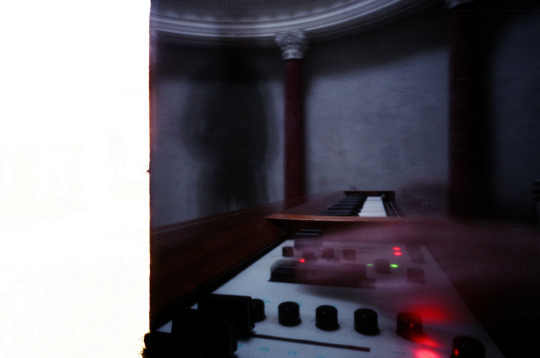
A long-exposure photograph of Jonny playing his digital ondes Martenot in the Round Room at Tottenham house, during the recording of In Rainbows.
Really, anything will do!
Simply put, there is no single waveform or timbre that can be attributed to an ondes Martenot. Each version and offshoot of the Martenot has its own waveforms, and they only sometimes overlap. But whether he’s playing his Ondomo or his French Connection, Jonny has nonetheless found a way to get his own sound from them. Ultimately, what matters most is the control interface. As long as one plays using the ring and intensity key (touche d’intensité), any periodic waveform will sound like an ondes Martenot – you might just need to adjust the filtering and reverb. That’s the reason VST replicas of the Martenot, such as Soniccouture's Ondes, sound so different from the real thing, despite using samples of the Martenot’s waveforms and impulse responses of the speakers. Unsurprisingly, the control interface is what matters most. Still, it might be worth playing around with the waveforms in a VST like that, just to hear what you like. You can also listen to the timbre samples on Josh Seman’s website, though you can’t use that to test blends of waveforms.
You seem interested in Jonny’s timbre specifically, but things are equally muddy when creating a historically-correct instrument. Most modern derivatives of the Martenot are based on the MK7 instrument, which used transistors. But many of the most famous pieces for the Martenot were written for earlier version of the instrument that used tubes. Those versions had a much fatter sound due to the tubes overdriving, and had a different range of waveforms and timbres. But this doesn’t stop modern ondists from performing Turangalîla beautifully with a MK7. As long as the instrument has enough timbres to cover a good range of moods, the specific waveforms are ultimately fairly unimportant.
#ondes Martenot#ondes Musicales#Analogue Systems#Ondomo#Jonny Greenwood#Radiohead#How To Disappear Completely#The National Anthem#cymbal rush#there will be blood#Kid A#Wavemakers#If You Say The Word
25 notes
·
View notes
Text
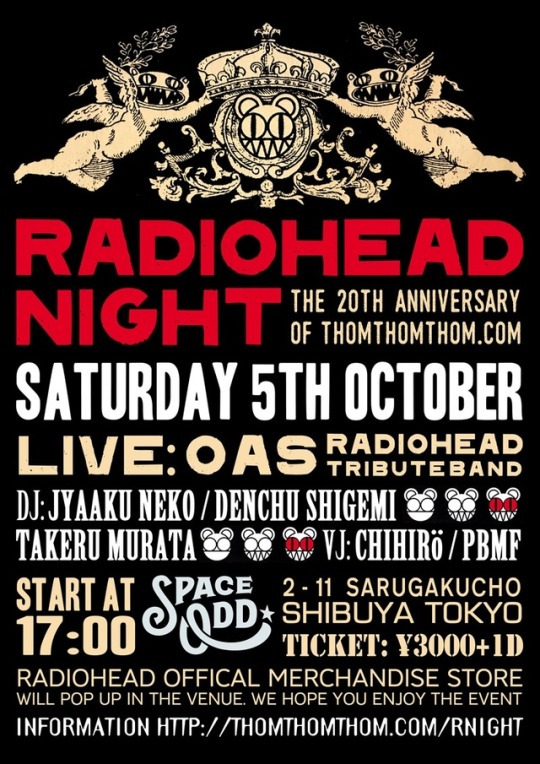

if you live or stay in Japan this summer/autumn.
please contact me, if you need more info or help.
#radiohead#thom yorke#jonny greenwood#colin greenwood#ondomo#edo'brien#philipselway#radioheadcoverband#radiohead tribute band#radiohead photo
13 notes
·
View notes
Photo

スペーススパイラル、オンドマルトノに絶対合うと思ったけどやっぱり相性👍 Two Buffalo Daughters、明日サラヴァ東京での新津由衣+ AZUMA HITOMI のイベントにちょろっとゲスト出演、オンドモ初ライブ。#SpaceSpiral #ondomo #Repost @yumikoohno ・・・ Nice delay for Ondomo #earthquakerdevices #ondomoofficial #buffalodaughter (at サラヴァ東京/saravah Tokyo)
1 note
·
View note
Photo

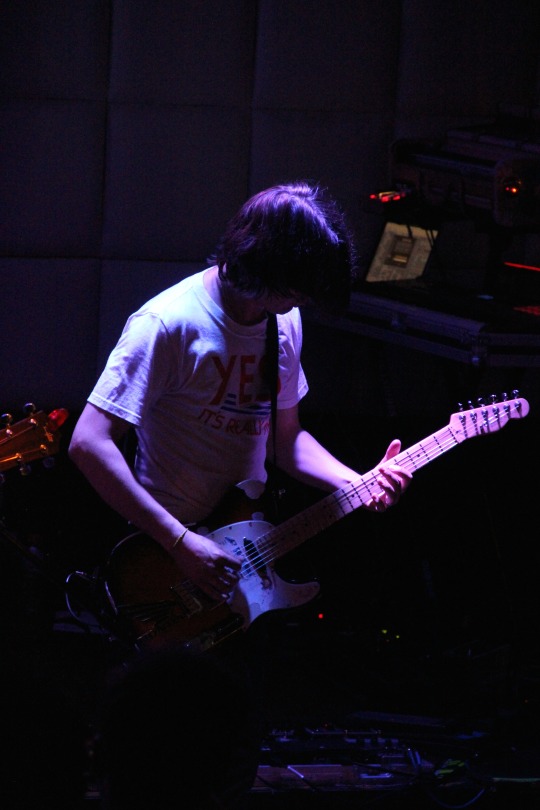

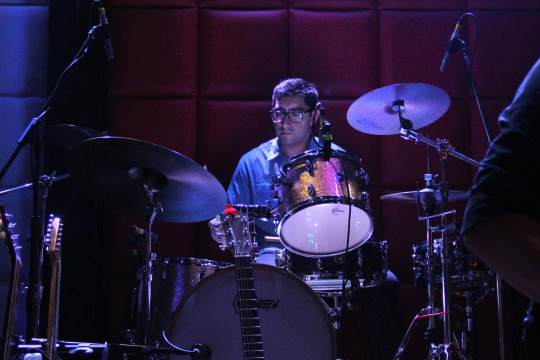
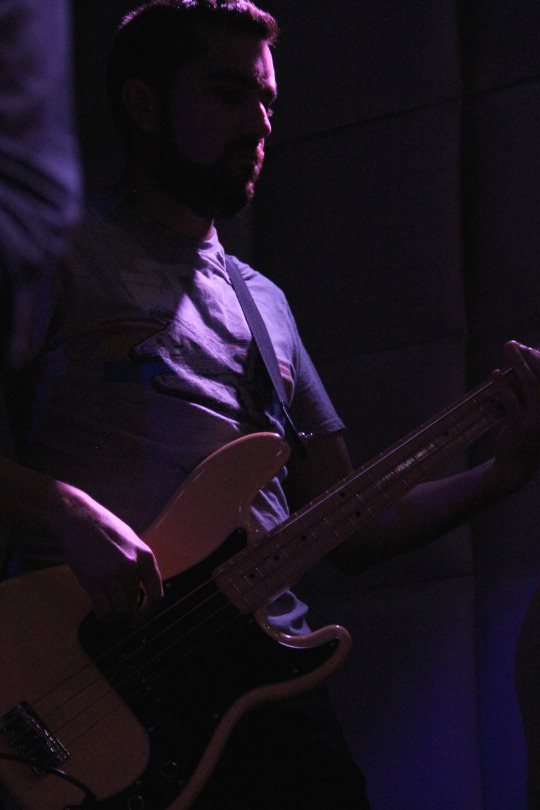


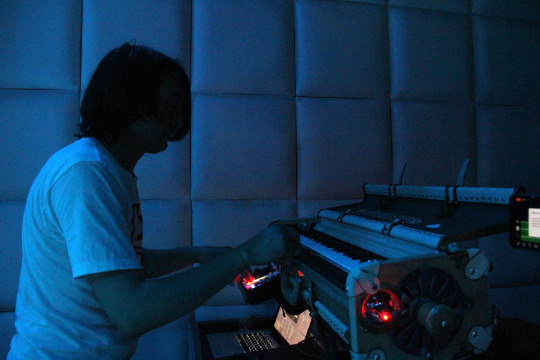

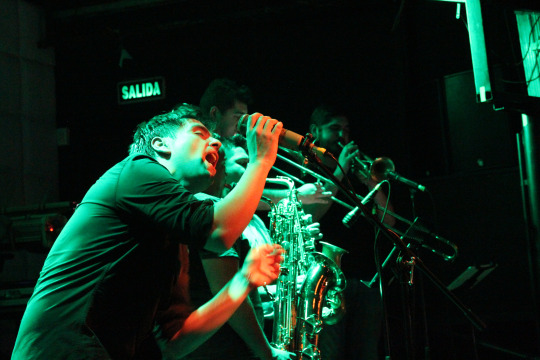
Fotos de nuestra última presentación en Batuta, Santiago. Chile.
Some pics of our last gig on Batuta, Santiago. Chile
#RadioheadChile #RadioheadLive #RadioheadFans #ThomYorke #JonnyGreenwood #Ondomo
1 note
·
View note
Video
Vocalise - Étude by Olivier Messiaen Clip 2 with piano by @rebeccaboblak and ondomo by @danielberkman #oliviermessiaen #ondomo #ondesmartenot #acapellaapp #quarentineduets #songsofcomfort (at San Francisco Bay Area) https://www.instagram.com/p/B-kHTVpBzIp/?igshid=1ghub7jczq8vs
0 notes
Video
#ondomo #ondesmusicales #fendertelecaster #headrush
0 notes
Video
youtube
Ondomo
0 notes
Text
Mapa mental - Unidad 4

Realice un mapa mental con la aplicación Mindomo sobre toda la unidad 4. Decidí utilizar esta aplicación a comparación de Ondomo porque se me resultaba mas cómoda a la hora de trabajar. Les comparto el link publico para que puedan visualizar el trabajo.
Link: https://www.mindomo.com/mindmap/ae6a1391e4fb4bffa600850df5761577
0 notes
Text
Snowdrops - “Live at the Archaeological Crypt of Paris” (2017)
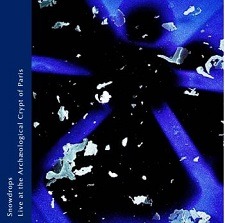
If you are not familiar with the exquisite sound of the “Ondes-Martenot”, one of the earliest (1928!!) electronic musical instruments, then you should listen to this short but beautiful live recording by Snowdrops. Played by Christine Ott (and accompanied by soundscapes of Mathieu Gabry) the instrument’s eerie, wavering notes create a journey beyond time and space, even far beyond the fitting space of the archaeological crypt in Paris.
Released: 5 october 2017
Info Bandcamp: This recording is a special live performance by the duo Snowdrops - side project of Christine Ott, recorded in the Archaeological Crypt of Paris, under the square of Notre Dame, on September 10, 2017.
Commissioned by the Paris Museums during the festival "Les traversées du Marais - A contre-temps", the duo has created a bubble of sound out of time, an apnea in the middle of the vestiges of the past and surrounded by a circle of keyboards. These epic six pieces are the raw memory of this timeless journey. Snowdrops dive into the depths of their sonorous sculpture; compositions, improvisations and total letting go.
Snowdrops is Christine Ott & Mathieu Gabry : Ondes Martenot, Ondomo, Keyboards, Soundscapes
Recorded live 10 September 2017 by Sam Navel & Snowdrops
What they say: not much at the moment
Live at the Archaeological Crypt of Paris by Snowdrops
#spotlight on#new releases#snowdrops#live at the archaeological crypt of paris#christine ott#2017#bandcamp#ondes martenot#ambient#soundscapes
1 note
·
View note
Photo

Ondomo was there.. He was playing ondomo we made for him. i was just crying.. thank you Jonny..
69 notes
·
View notes
Video
Vocalise-Étude by Olivier Messiaen with Piano and Ondomo Piano by @rebeccaboblak Ondomo by @danielberkman * * * #oliviermessiaen #etude #vocalise #piano #ondesmartenot #ondomo #acapellaapp #quarentine #quarentineduets #socialdistancing #musicbringspeopletogether (at San Francisco Bay Area) https://www.instagram.com/p/B-j-mkLh0xV/?igshid=rn1yhfzk6exq
#oliviermessiaen#etude#vocalise#piano#ondesmartenot#ondomo#acapellaapp#quarentine#quarentineduets#socialdistancing#musicbringspeopletogether
1 note
·
View note